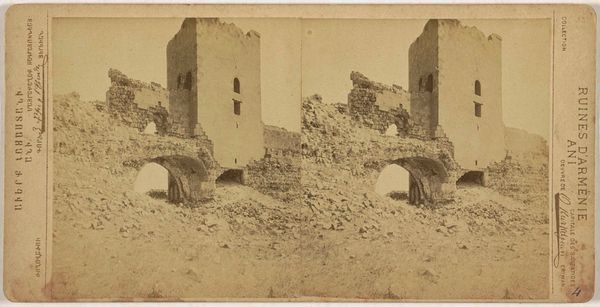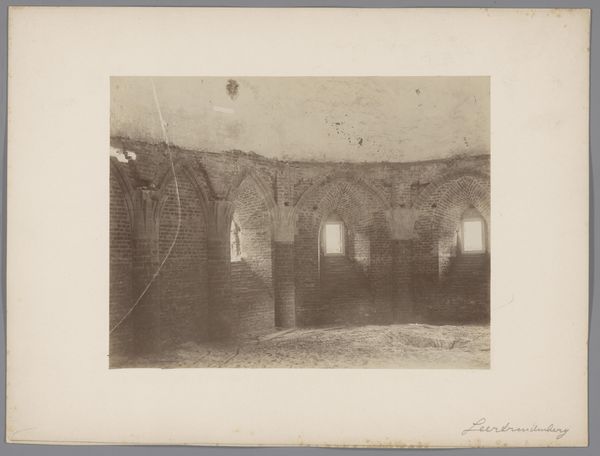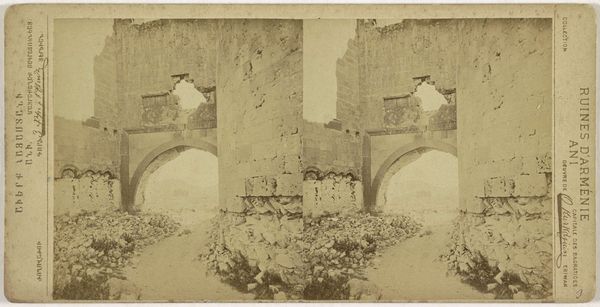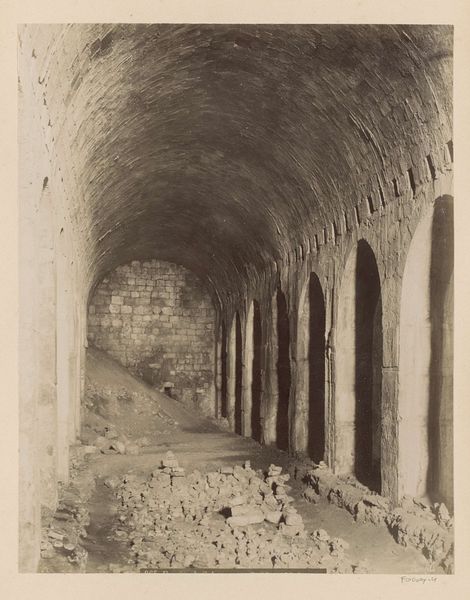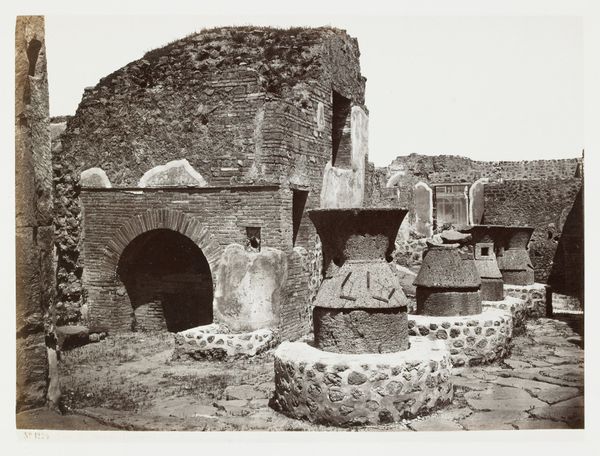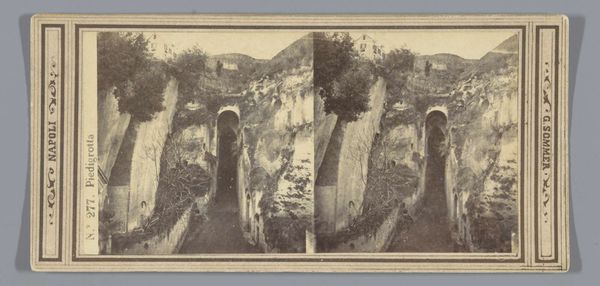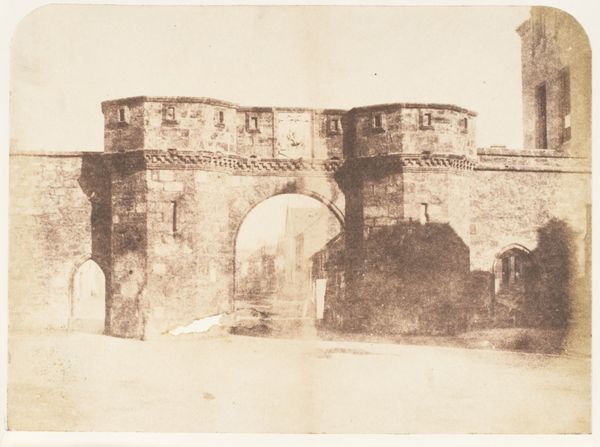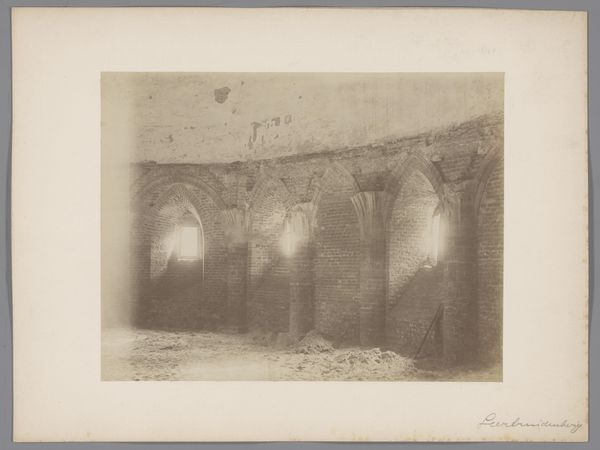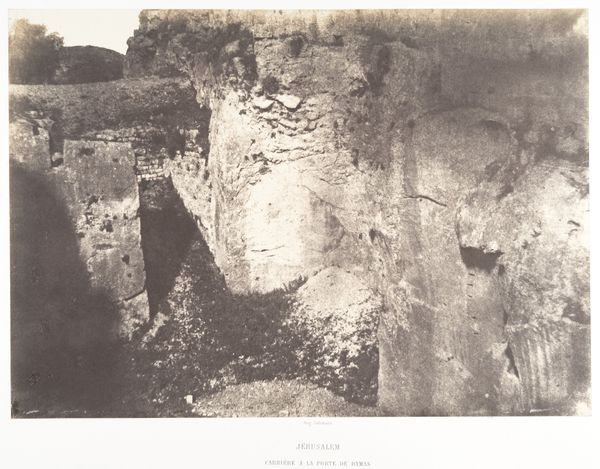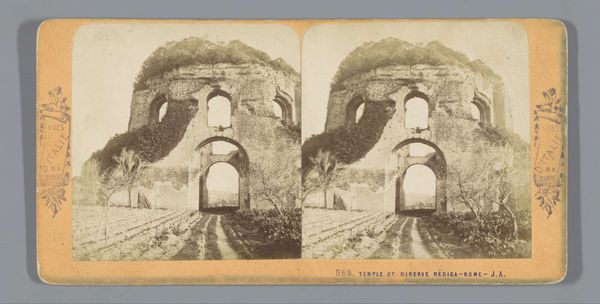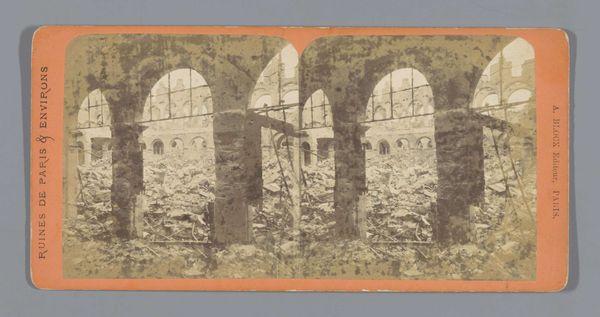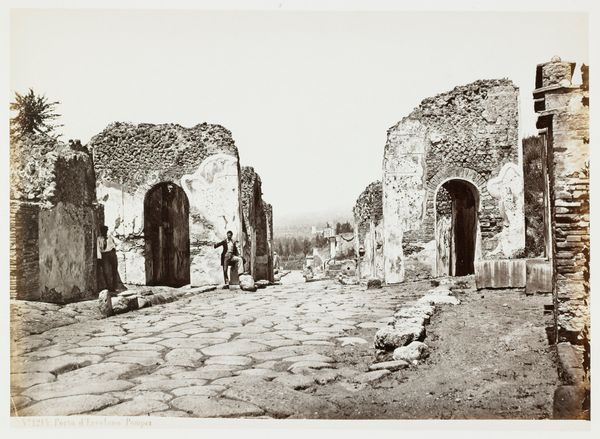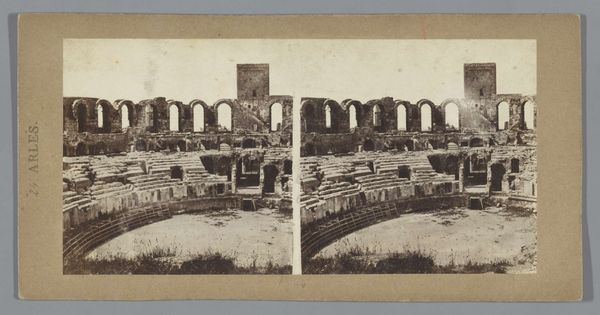
Dimensions: height 86 mm, width 176 mm
Copyright: Rijks Museum: Open Domain
This stereoscopic card shows the Kasteelruïne Hohnstein, near Neustadt/Harz, captured by Hermann Selle. It's a commercial photograph, one of many produced in Germany as tourism increased in the late nineteenth century. Consider the method of production here: photography, at this time, was no longer a unique art object, but a mass produced item. Though the photographer would have needed skill in selecting viewpoint and controlling exposure, the darkroom processes were increasingly routinized. The photograph has a direct relationship to the materials it depicts. It gives us a sense of the stone’s texture, the weight of the architecture, and even the atmospheric conditions that have caused the ruin. As viewers, we are drawn into this interplay between the image and the subject it represents. It suggests a tension between the romantic allure of the past, and the realities of labor, production, and consumption. So, next time you look at a photograph, consider not just what it depicts, but how its own making and circulation contribute to its meaning.
Comments
No comments
Be the first to comment and join the conversation on the ultimate creative platform.
